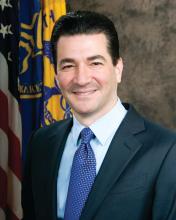“As the NIH, the FDA, and research entities have moved to strengthen their individual oversight efforts, some overlaps have occurred,” Dr. Collins and Dr. Gottlieb wrote Aug. 15 in the New England Journal of Medicine. “Substantial duplication has arisen in the submission of initial protocols, annual reports, amendments, and reports of serious adverse events. Originally, these overlaps – which affect no other field in biomedical research – were viewed as harmonized reporting that enabled FDA to conduct regulatory oversight while maintaining confidentiality with sponsors and allowed NIH to provide transparency with regard to the research.”
With three approved treatments – two CAR T therapies and a treatment for a genetic retinal dystrophy – and more than 700 active investigational new drug applications in front of the FDA, “it seems reasonable to envision a day when gene therapy will be a mainstay of treatment for many diseases,” according to the editorial.
To remedy the situation, NIH officials Aug. 16 posted a proposed update to NIH guidance that seeks “to reduce the duplicative oversight burden by further limiting the role of NIH and RAC [Recombinant DNA Advisory Committee] in assessing gene therapy protocols and reviewing their safety information,” Dr. Collins and Dr. Gottlieb wrote. “Specifically, these proposals will eliminate RAC review and reporting requirements to the NIH for human gene therapy protocols. They will also revise the responsibility of institutional Biosafety Committees, which have local oversight for this research, making their review of human gene therapy protocols consistent with review of other research subject to the NIH Guidelines. Such streamlining will also appropriately place the focus of the NIH Guidelines squarely back on laboratory biosafety.”
RAC was originally established in 1974 to advise the NIH director on research involving manipulation of nucleic acids, but was later expanded to review and discuss protocols for gene therapy in humans.
The proposed structure provides an opportunity “to return the RAC to the spirit in which it was founded. ... The NIH envisions using the RAC as an advisory board on today’s emerging technologies, such as gene editing, synthetic biology, and neurotechnology, while harnessing the attributes that have long ensured its transparency,” they wrote.
This latest proposal follows a suite of FDA draft guidances on gene therapies issued in July that proposed new guidance on manufacturing issues, long-term follow-up, and pathways for clinical development in certain areas.
The guidance is scheduled for publication in the Federal Register on Aug. 17.
SOURCE: Collins FS and Gottlieb S. N Engl J Med. doi: 10.1056/NEJMp1810628.



